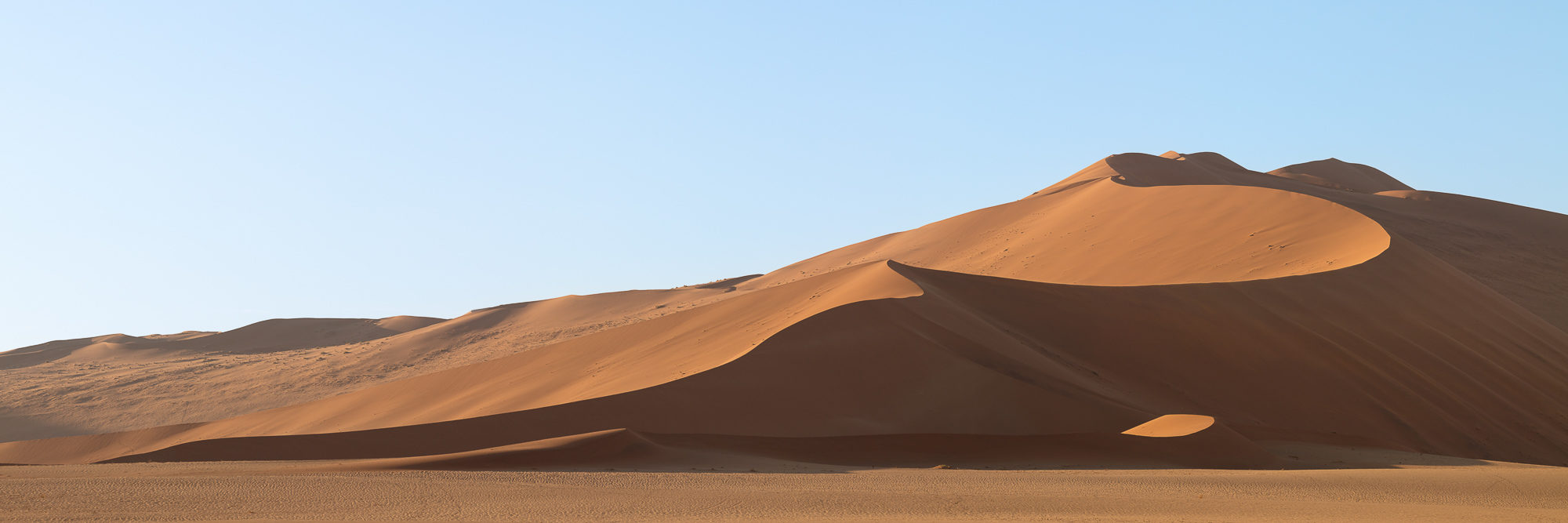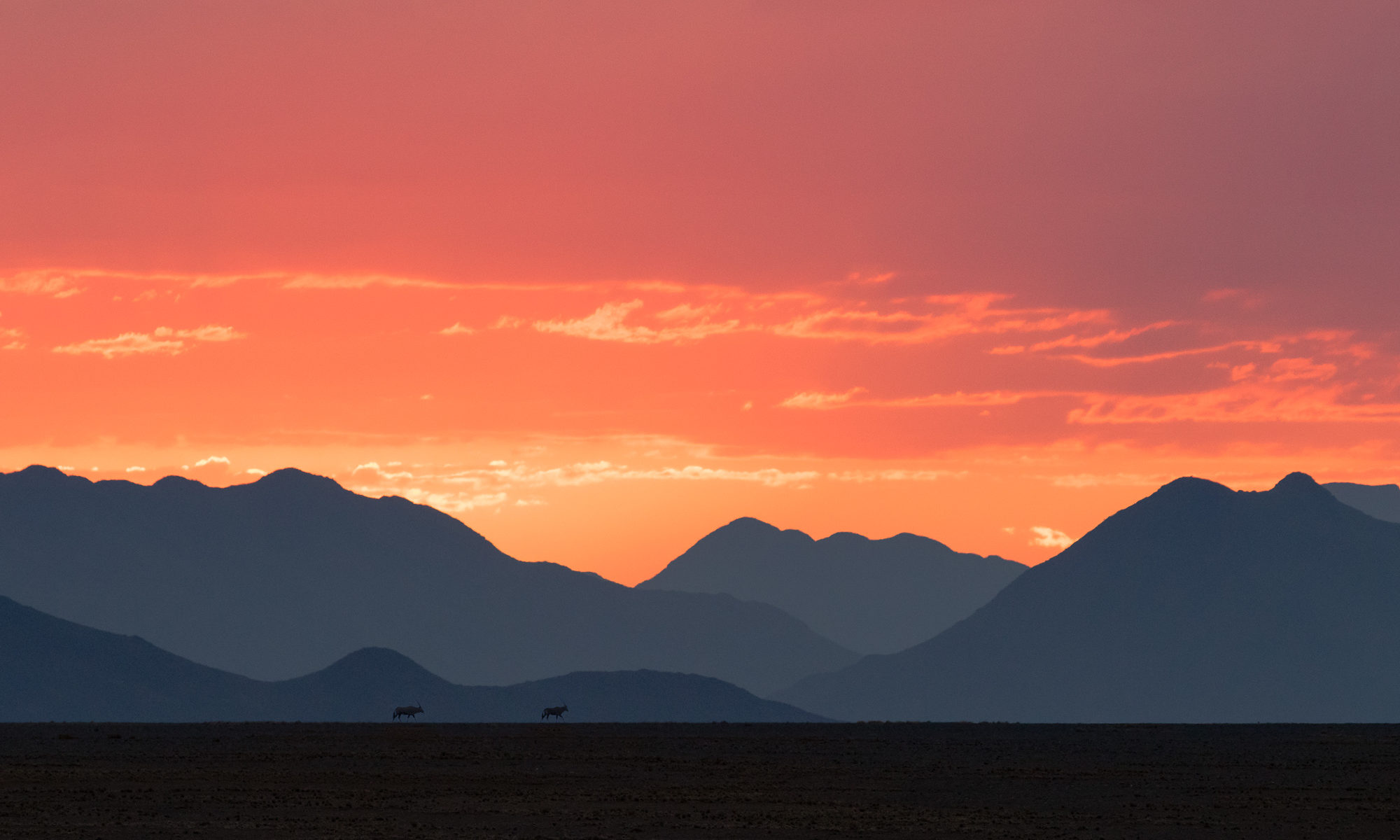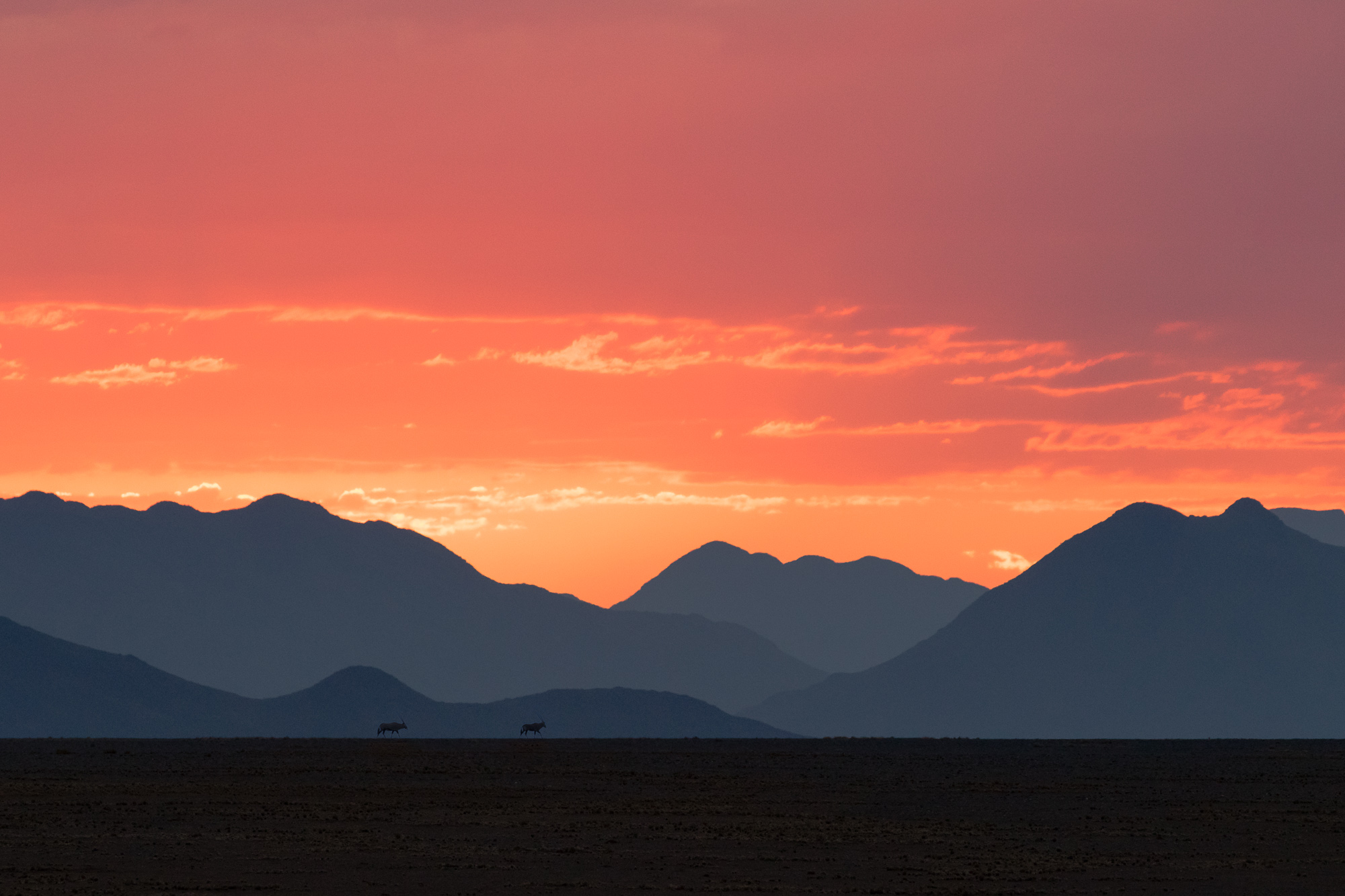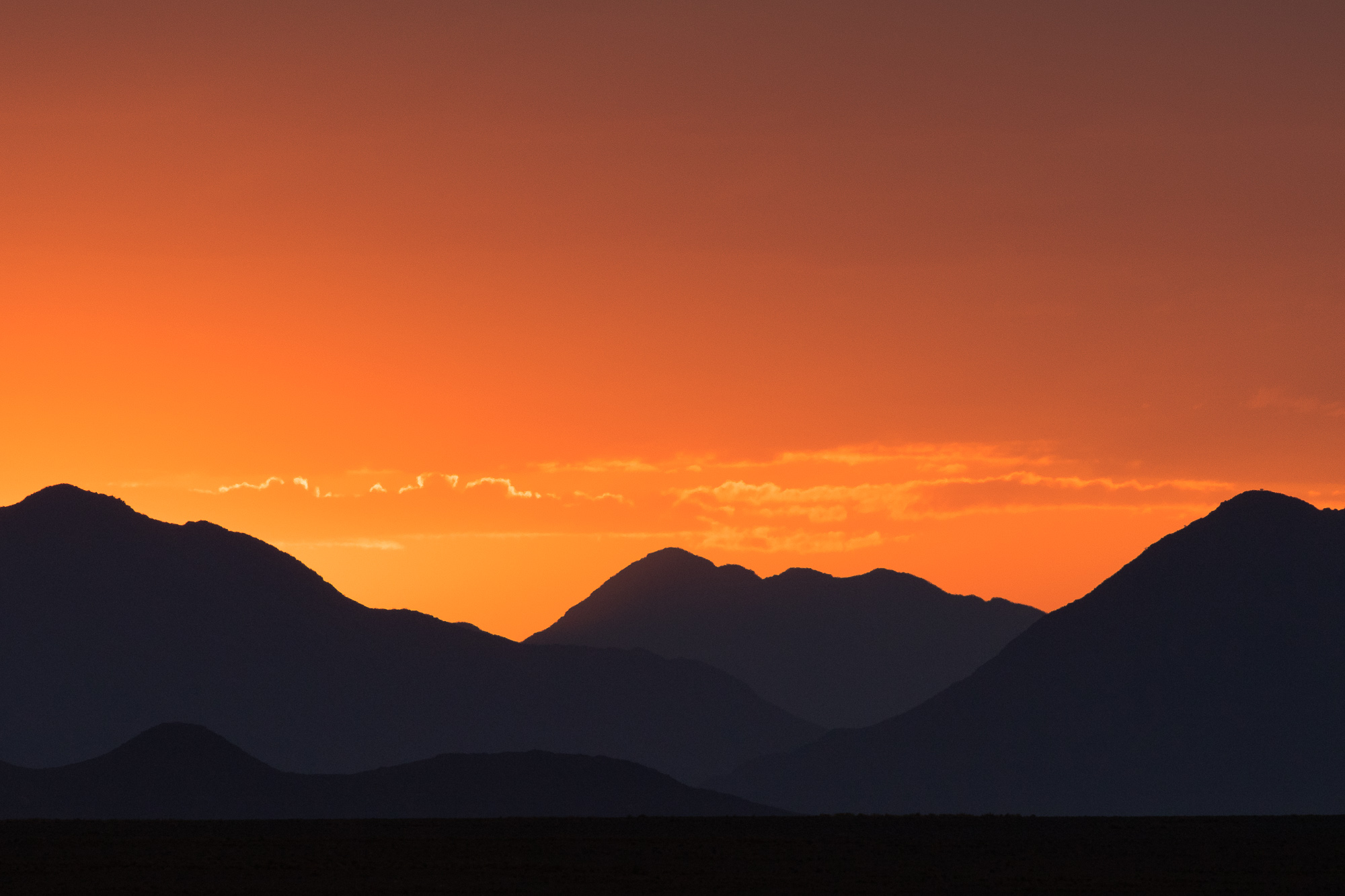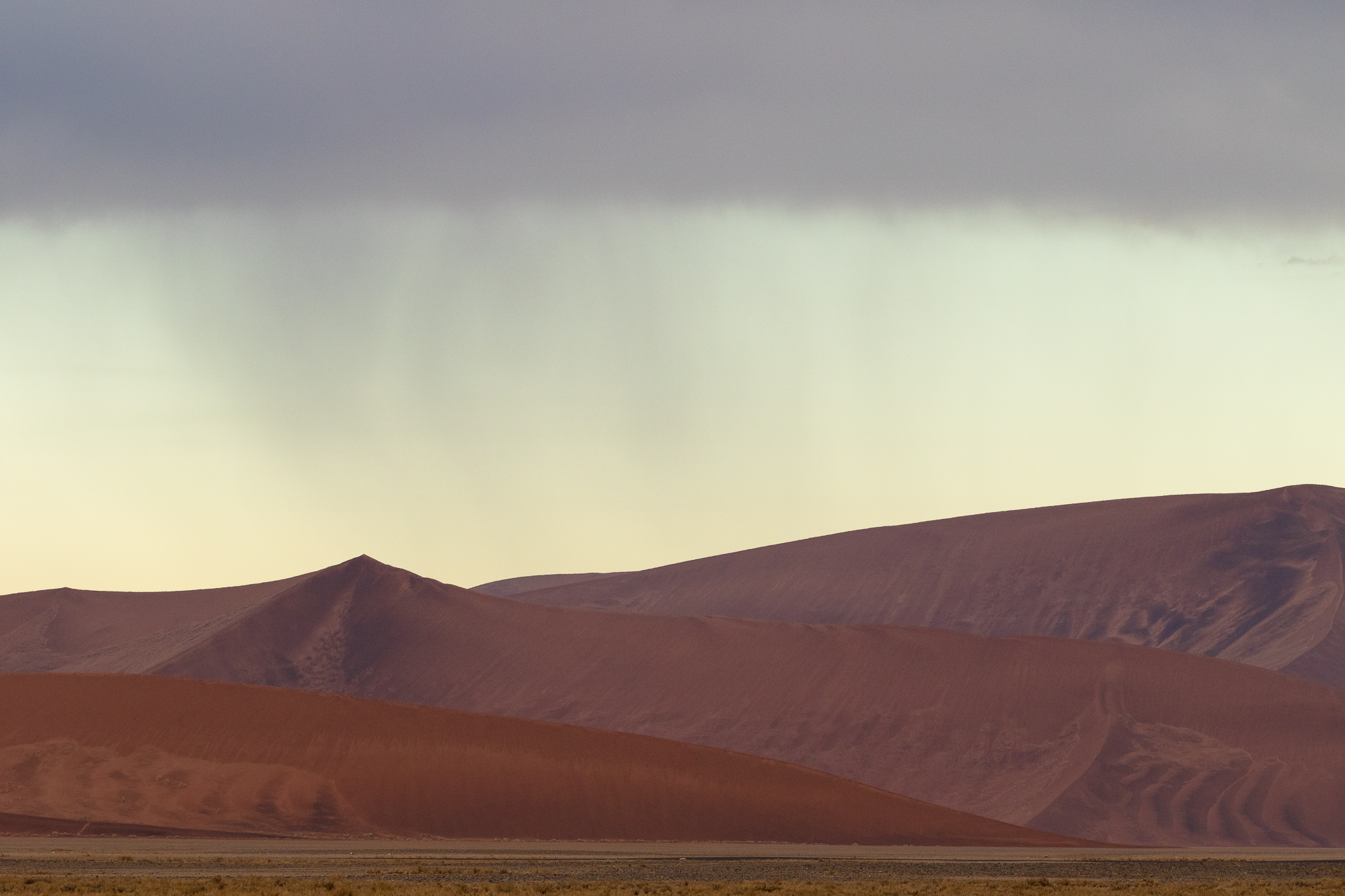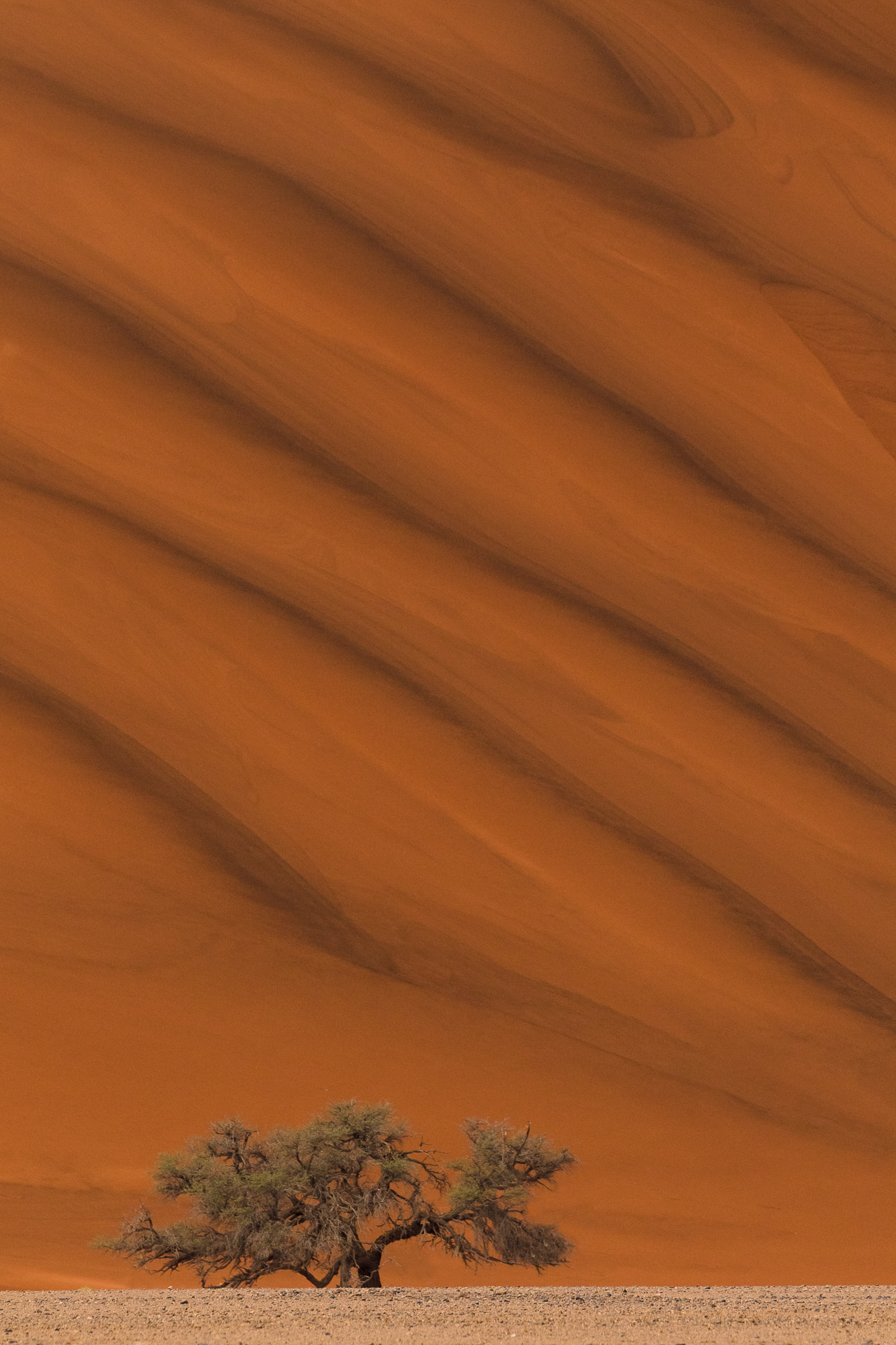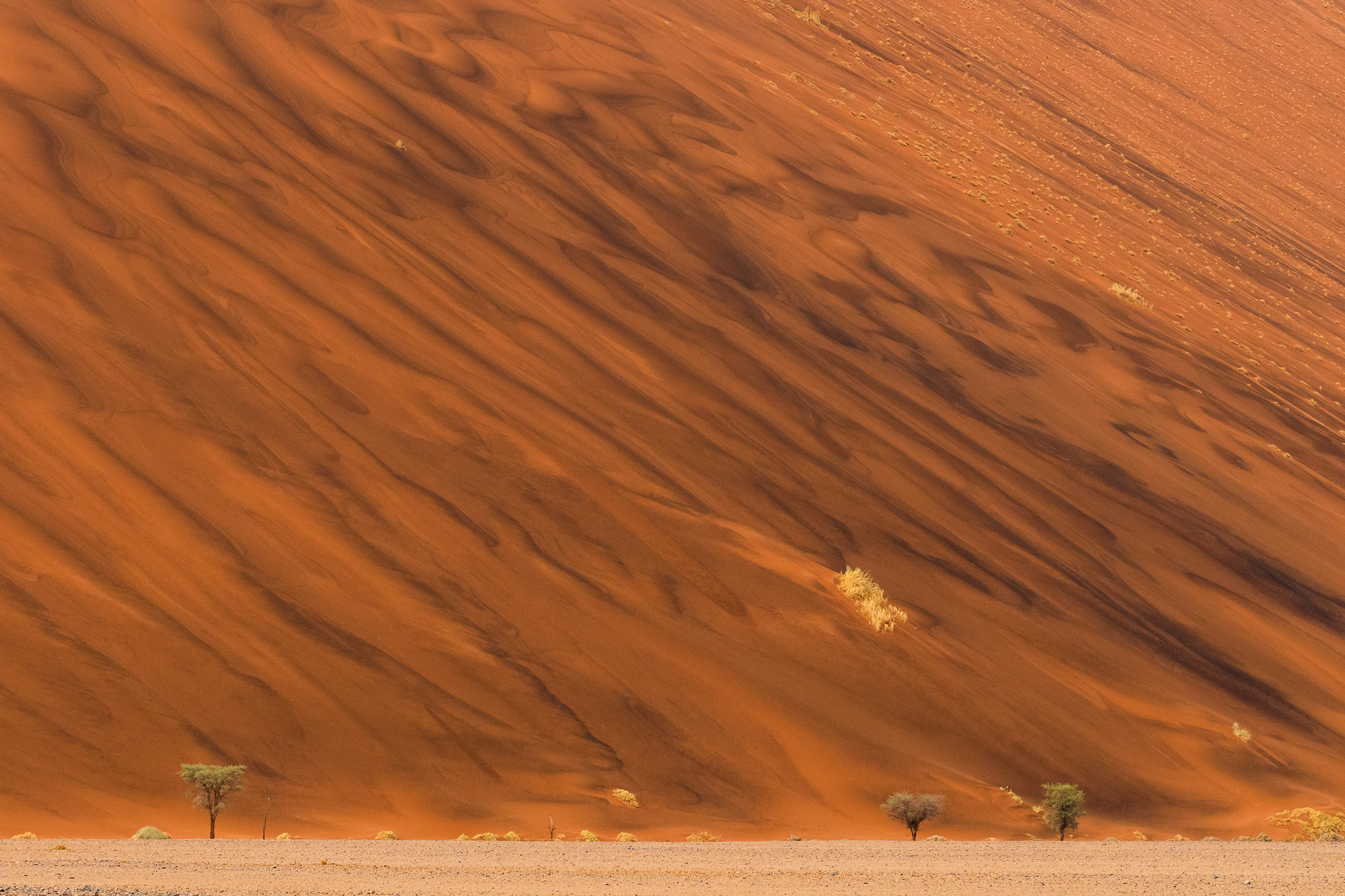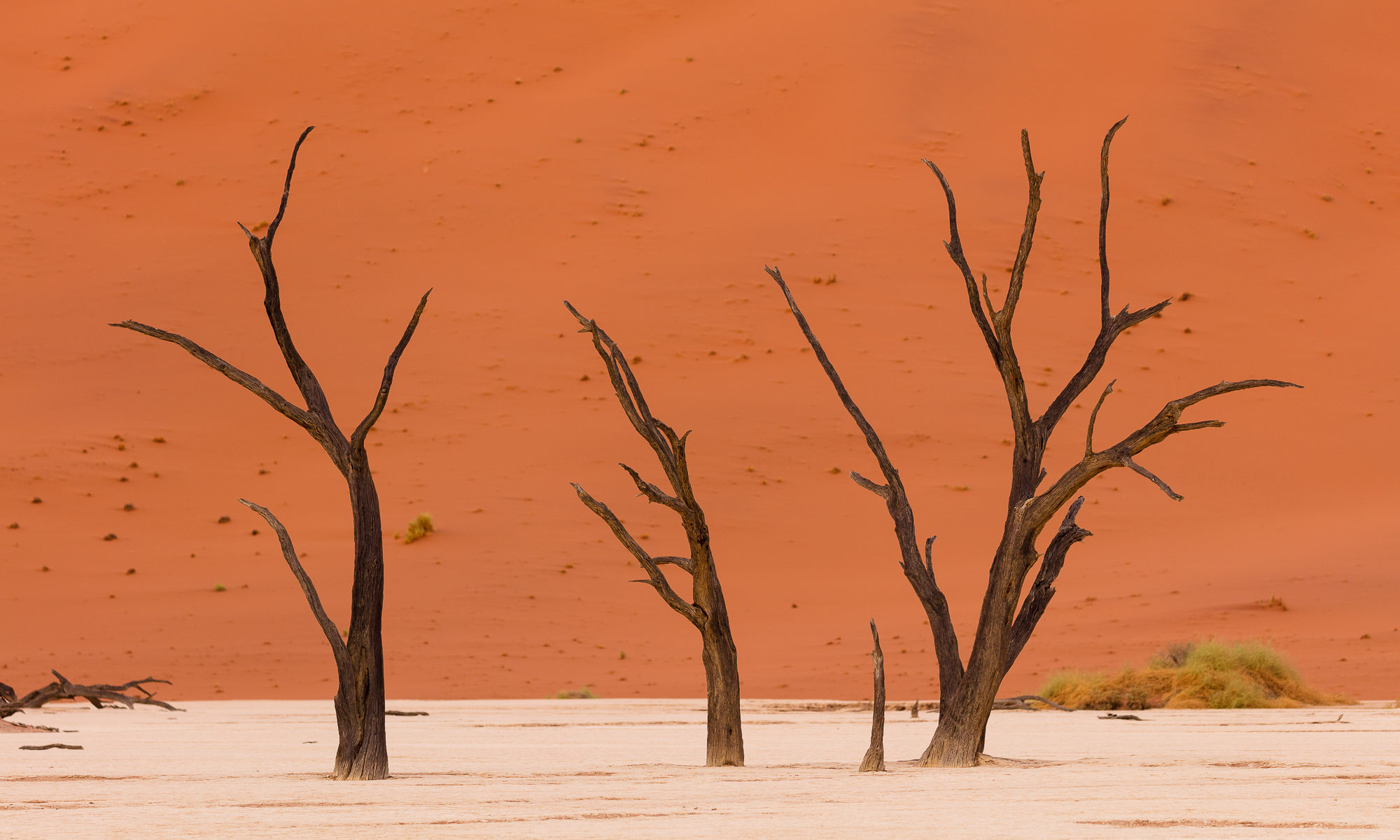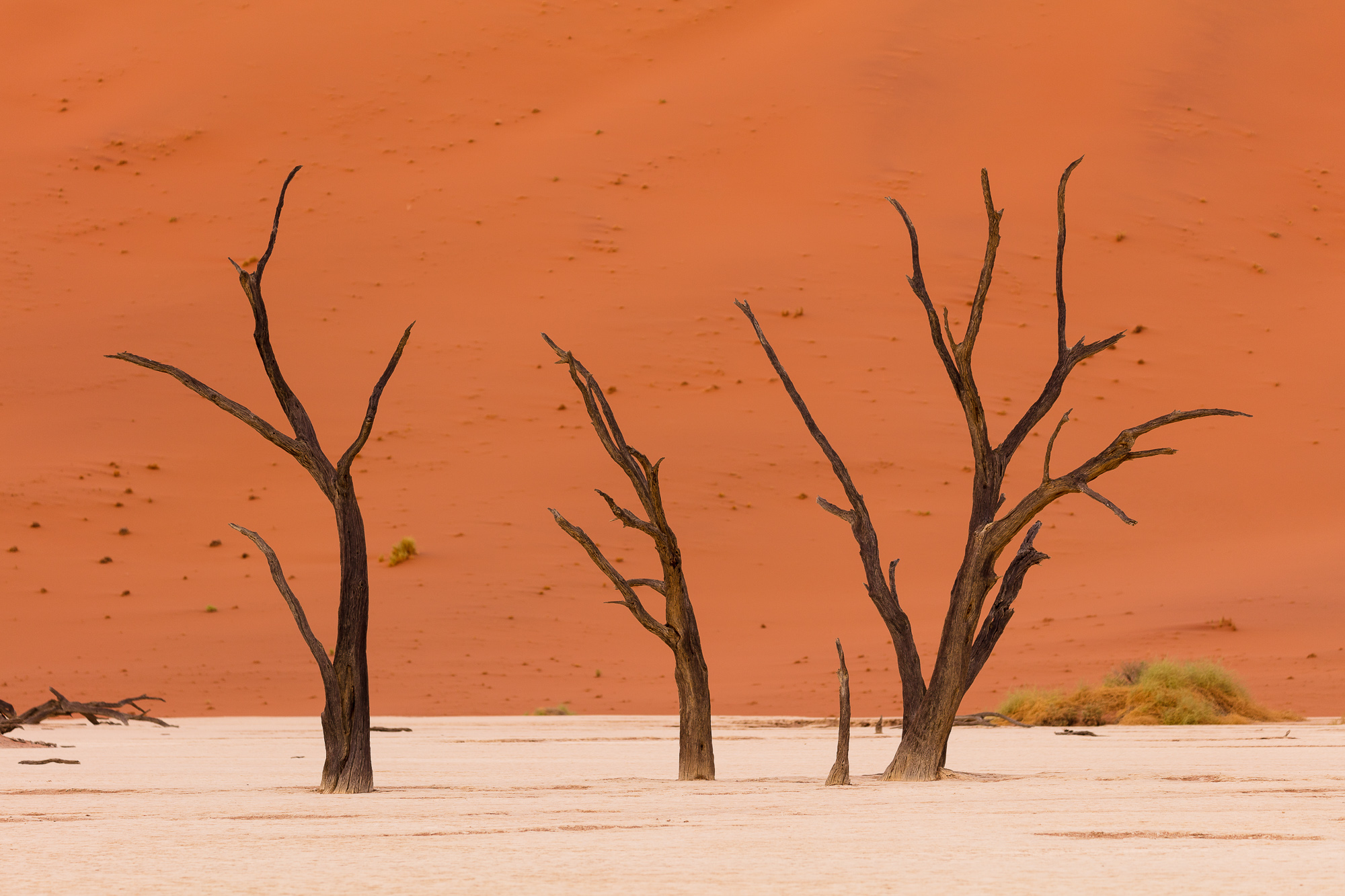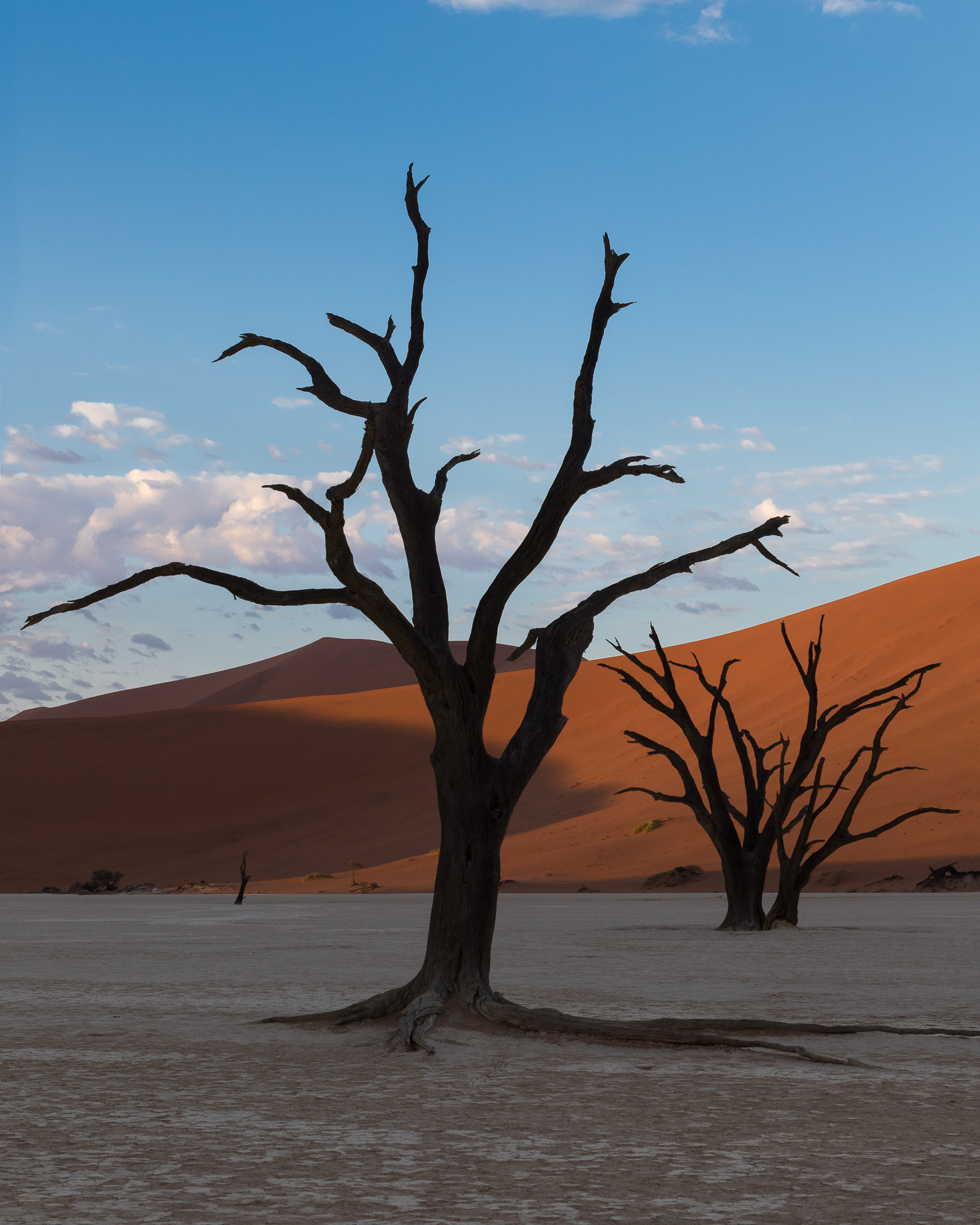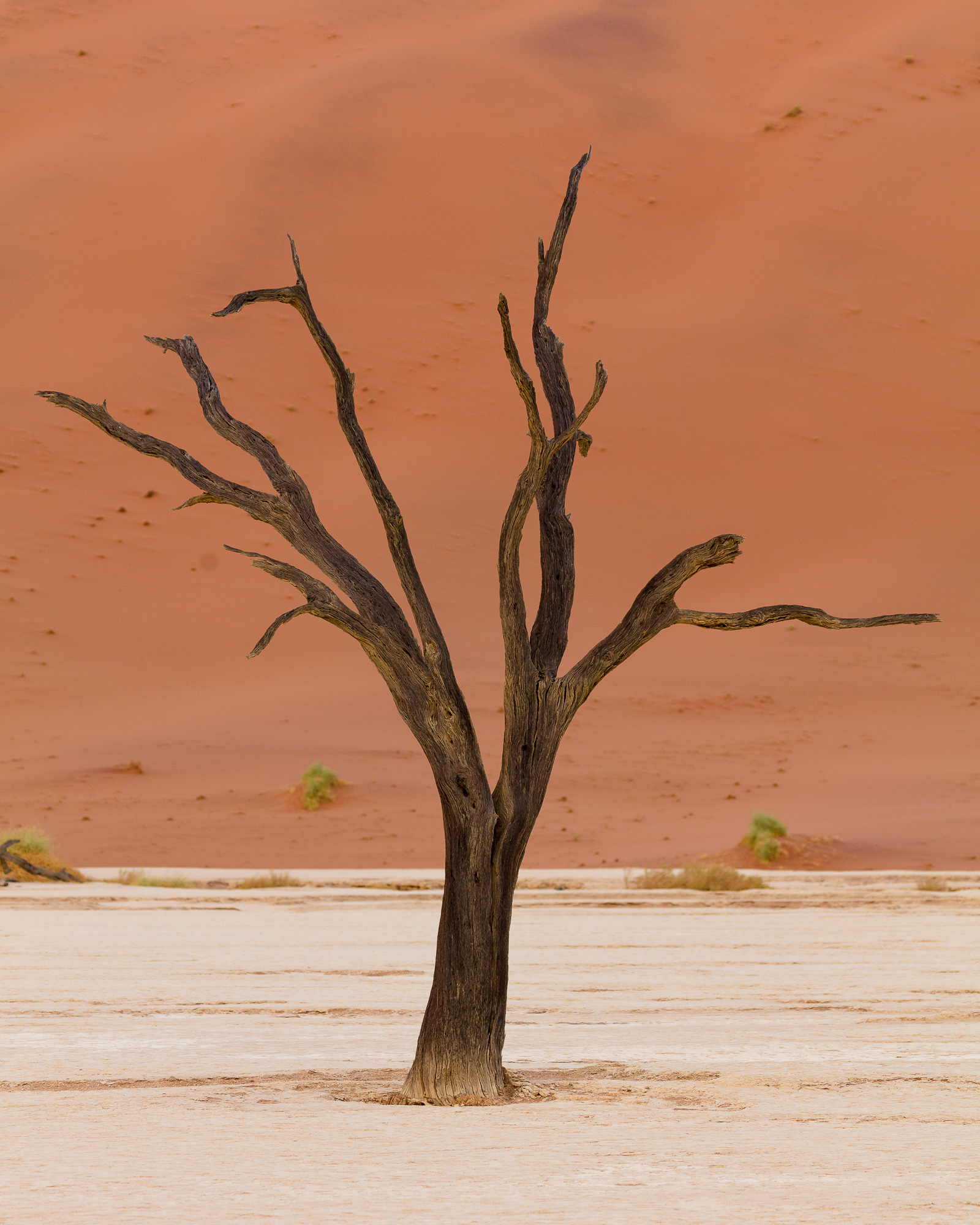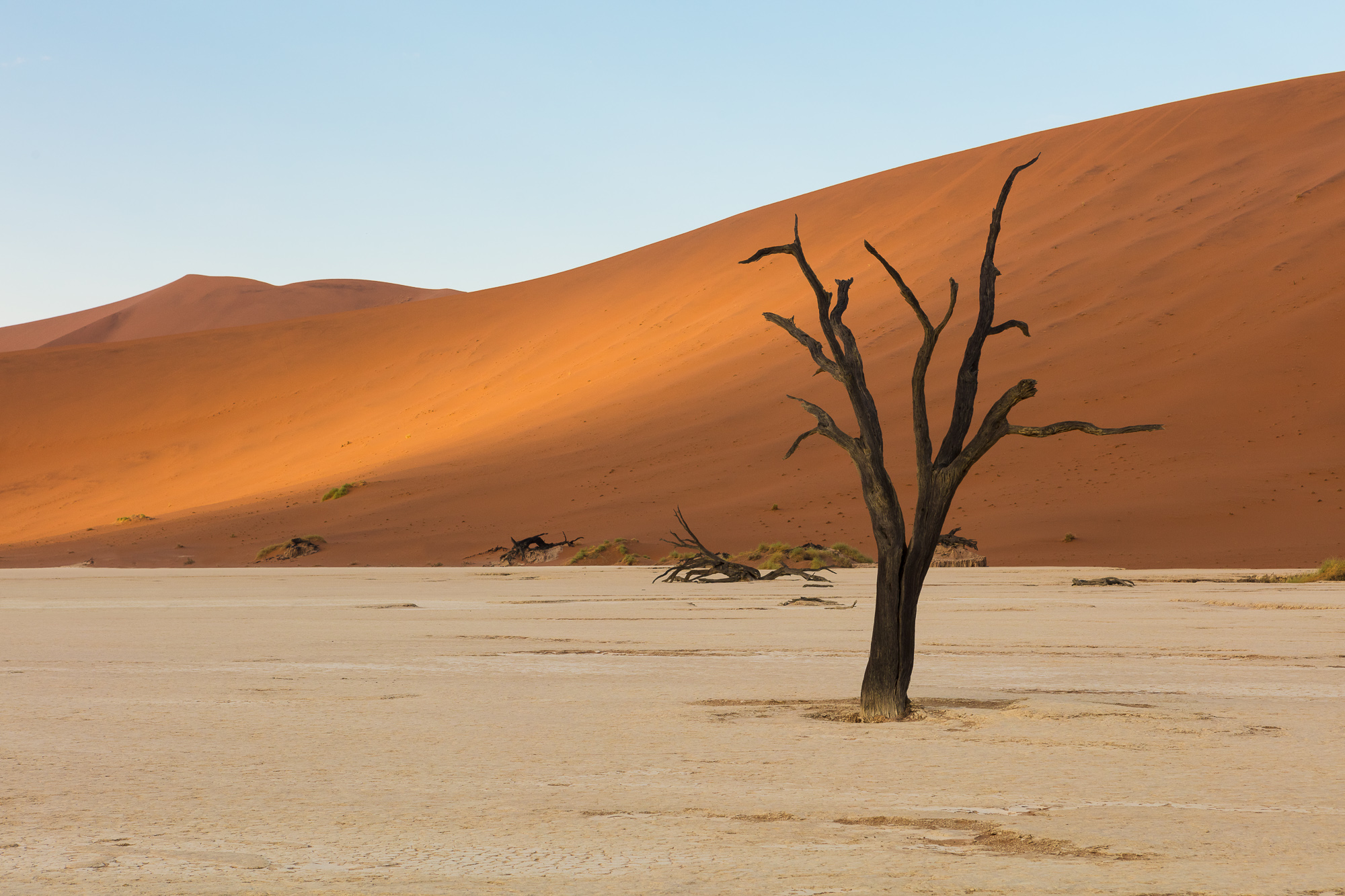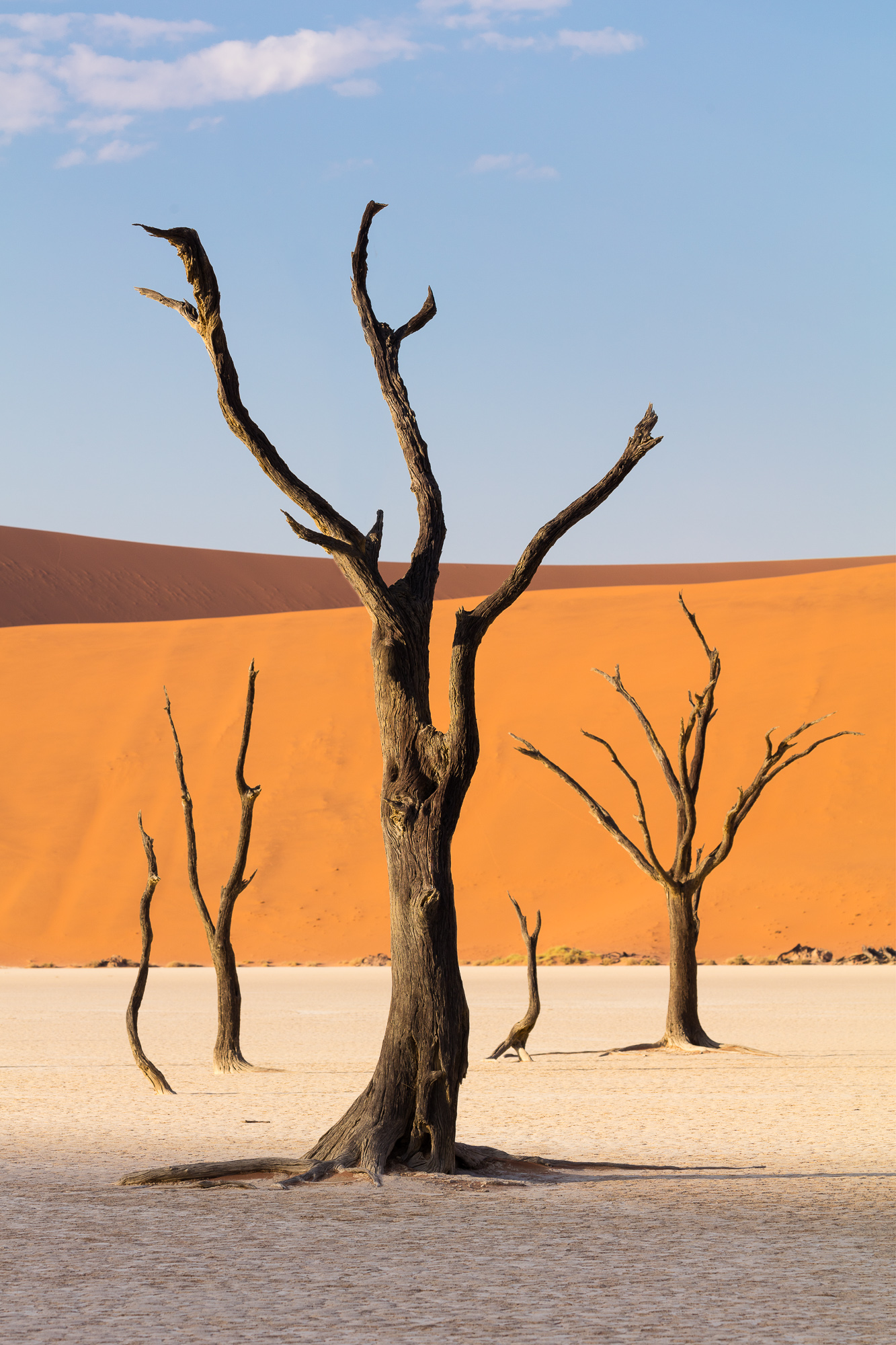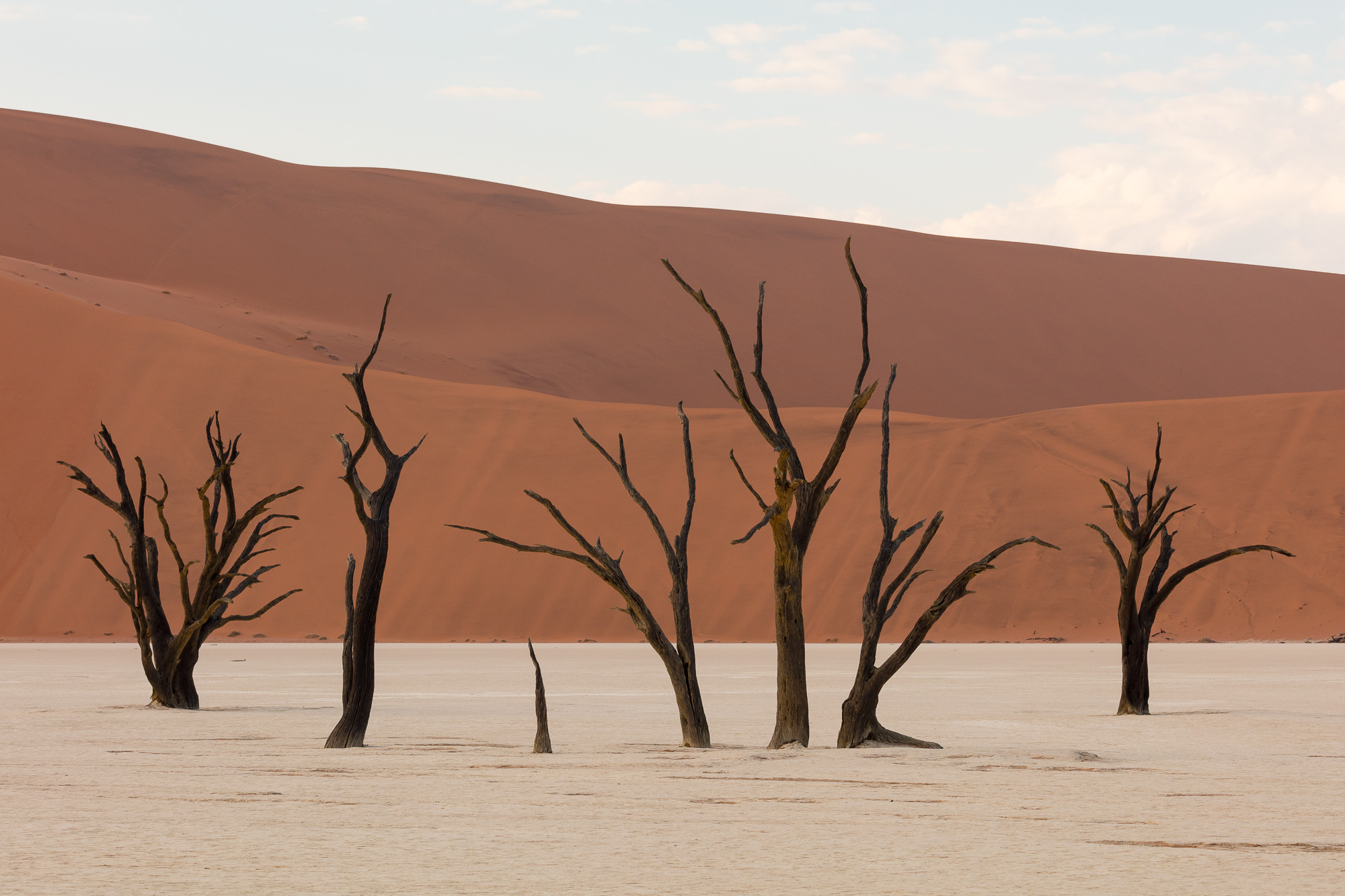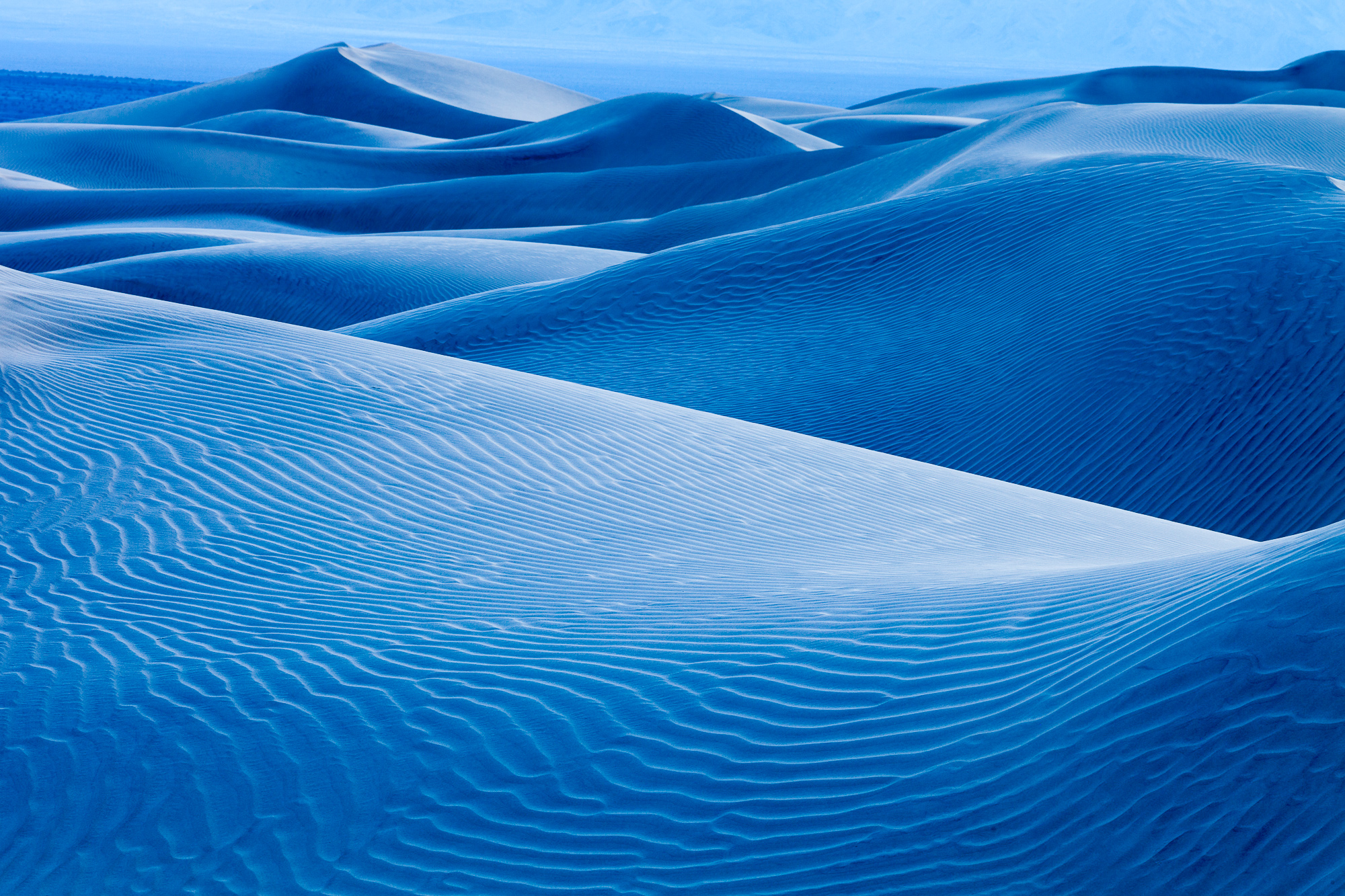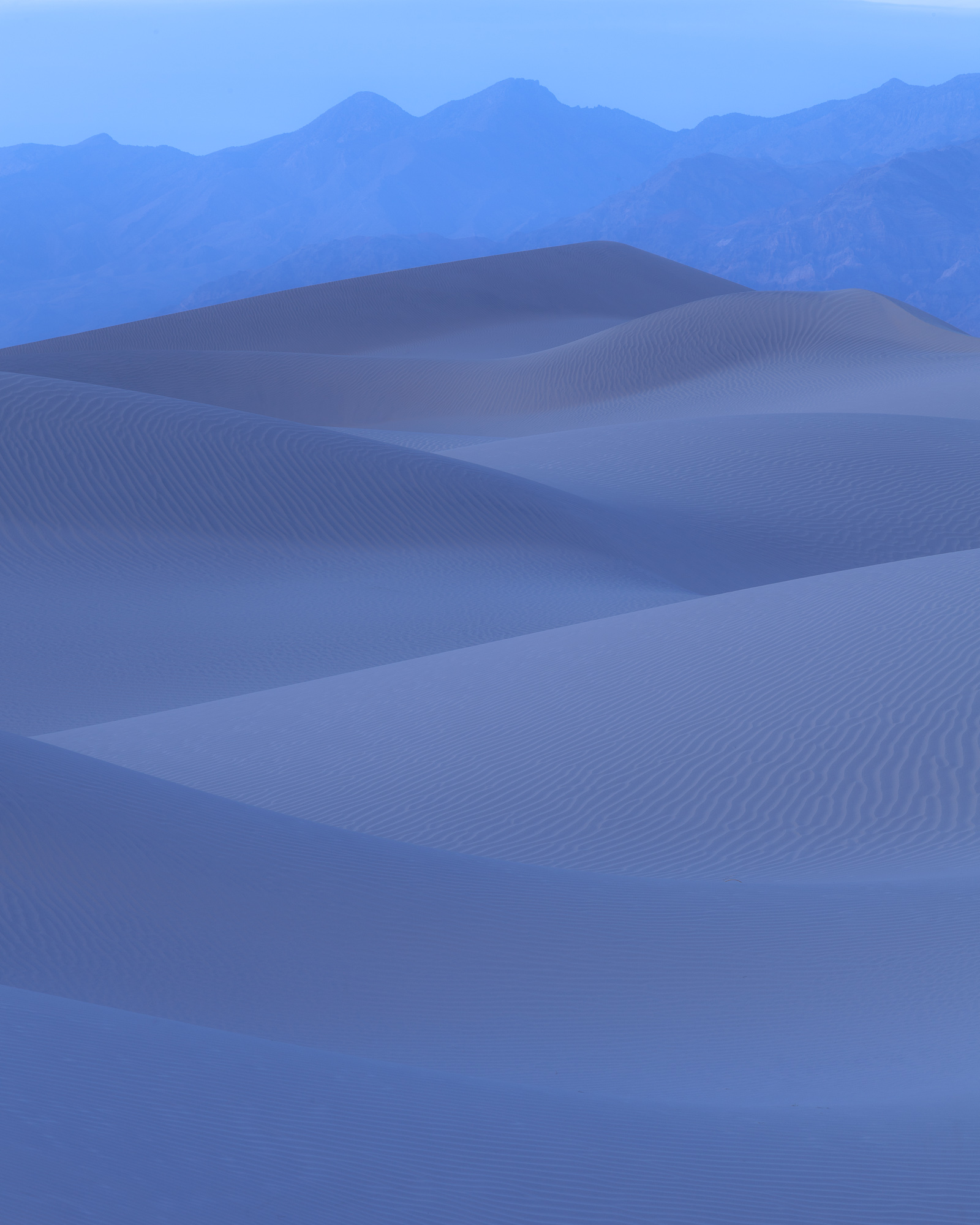Sometimes when I go to new locations, they can be so awe inspiring that I feel photographically challenged. When this happens, I need to take a step back and think about the location’s special traits that fill me with such awe. What is important about this area – is there some natural event occurring, or some irregular weather phenomenon? In short, what are the stories this new place is trying to tell me? Answering this question often lends direction to my photography and helps me realize which stories about the area I want to share with others. (Note: although I primarily photograph natural subjects, this technique works equally well with any location or subject).
I recently used this technique when I spent several days in the Namib Desert in Namibia last year. At first, being surrounded by these huge red sand dunes was overwhelming. What should I shoot first? As I explored the desert around me, I began to recognize several stories that this place had to tell.
The most obvious story was about the sheer size of the sand dunes found here. This is the oldest desert in the world, and home to the world’s largest sand dunes. I had photographed sand dunes before, but never any of the massive size that I saw in this desert. The rust-orange massifs were more akin to sand mountains than something as temporary and fleeting as a dune. Some of the largest dunes stood over 1000 feet tall, dwarfing the sparse trees and flora that dared to grow at their feet. In the photo below you can faintly see a few trees, which give the enormity of the dunes a sense of scale.
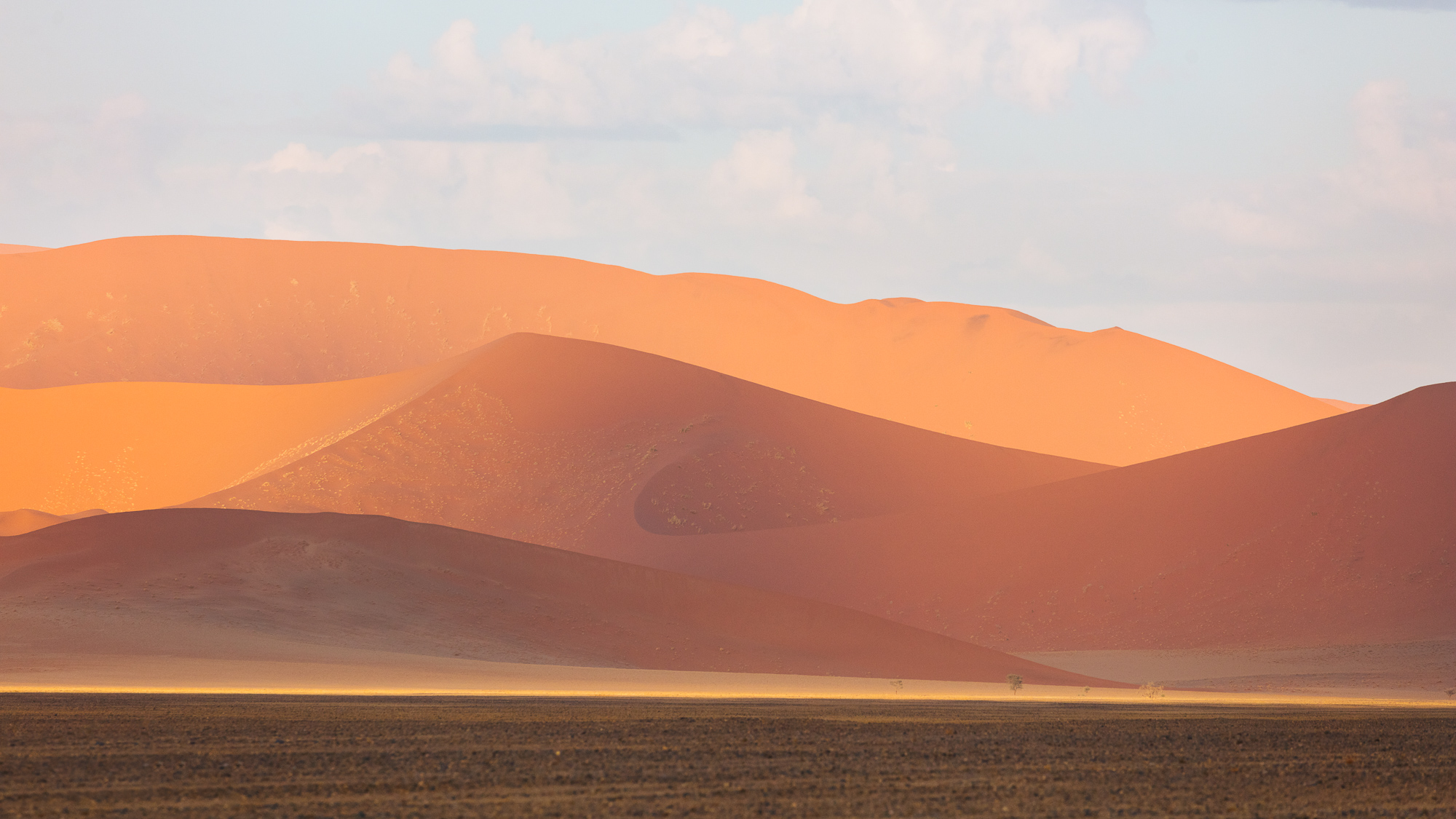
Although this desert receives only 10 mm of rain each year, amazingly there are large mammals that thrive here. This was story number two. Here, a gemsbok oryx (one of Africa’s many species of antelope) roams among dry scrub and dying trees. With no ground water to drink, these animals rely on the occasional fog that rolls in from the Atlantic ocean. After the fog collects on plants and their fur, the oryx lick the scarce moisture from each other’s coats, sustaining themselves until the next foggy morning.
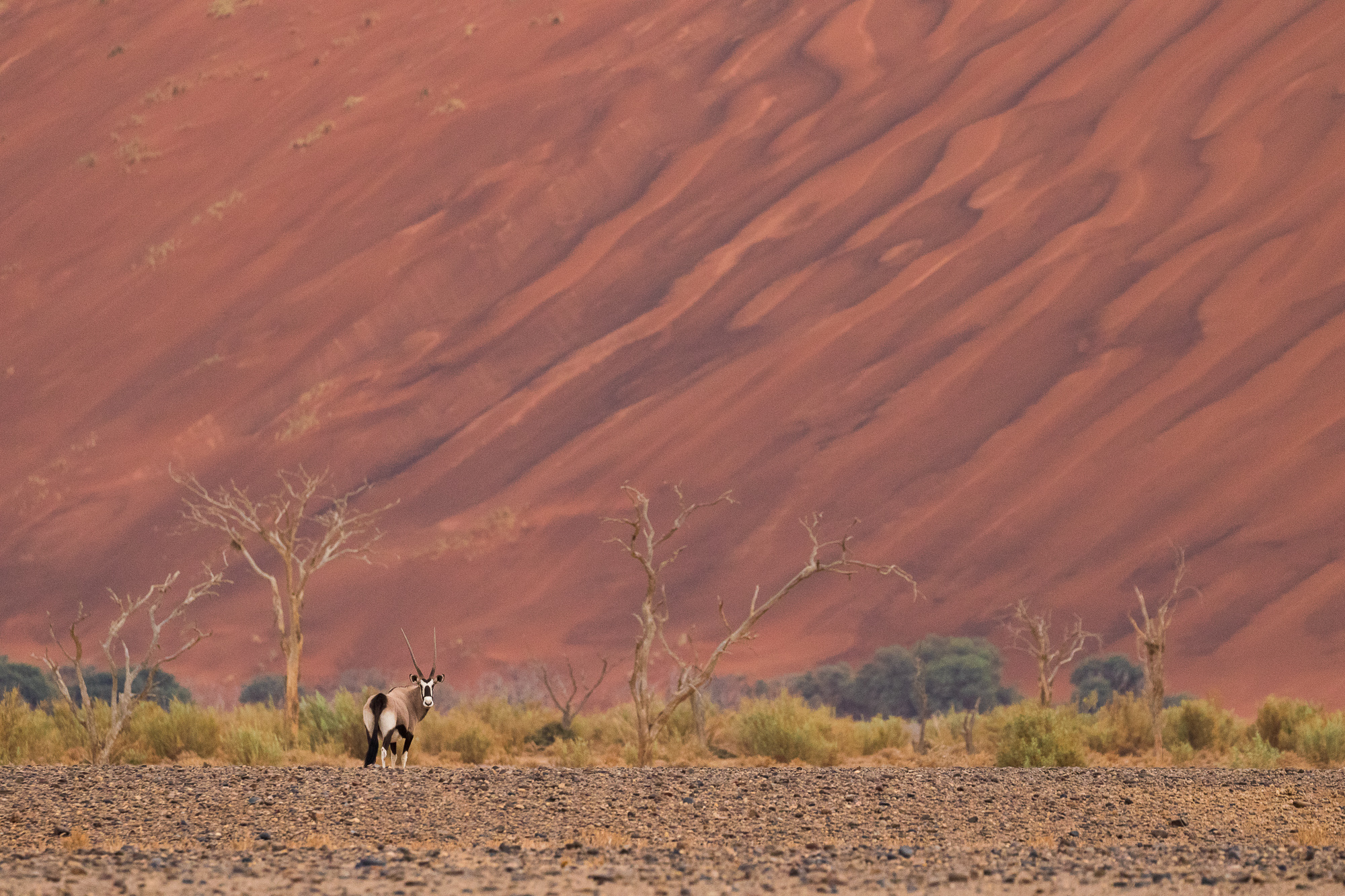
While I could take up-close portraits of oryx in other parts of Namibia, telling the story of these large antelope thriving in the desert necessitated using a shorter lens than I usually do for wildlife. A 400mm lens allowed me to include the massive red walls of sand that dominate this habitat. Again, it was important for me to use unique elements of the scene to tell the story of that location.
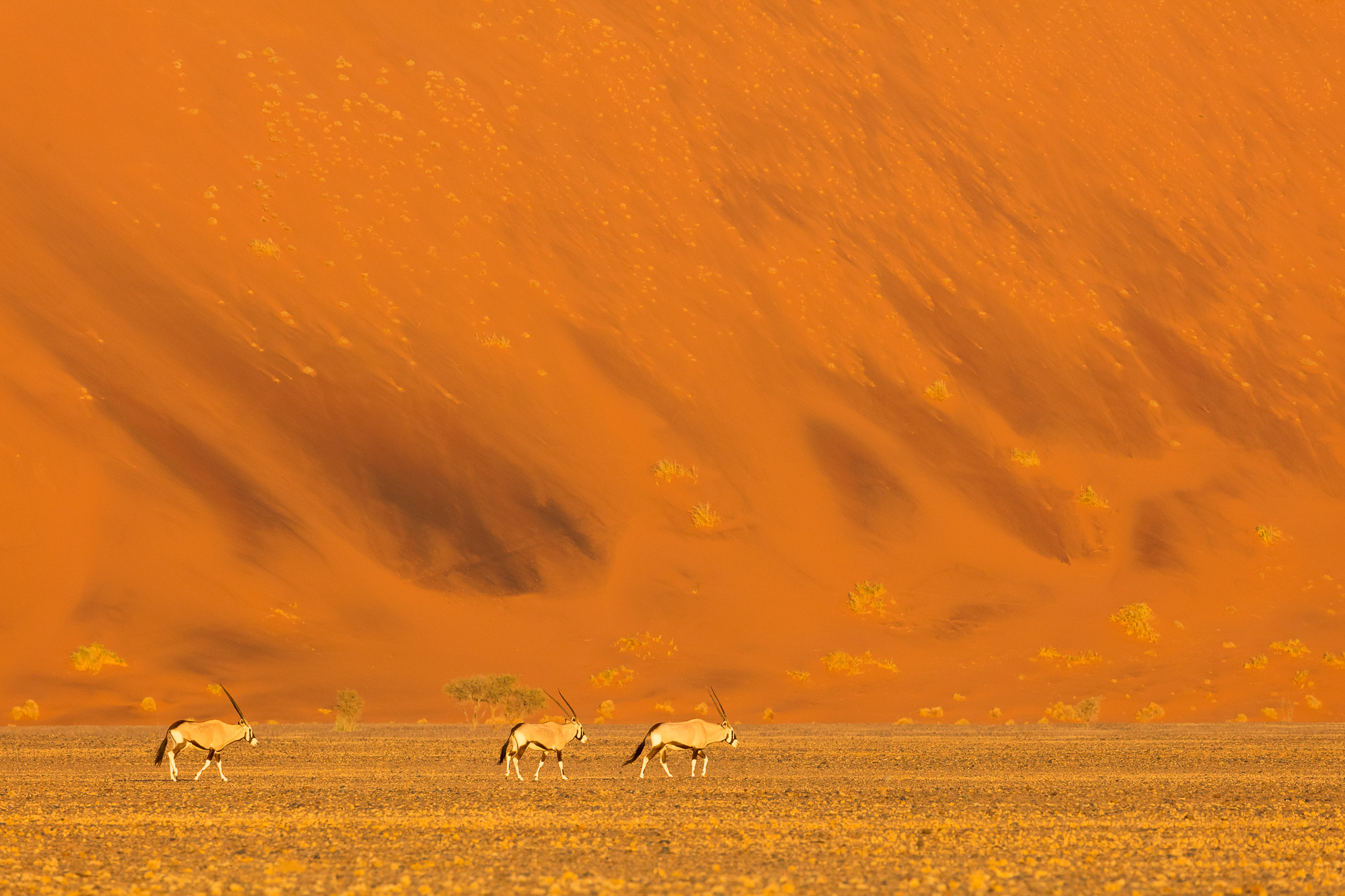
A third aspect of this desert that I wanted to show photographically was the rust orange color of the sand. This reddish orange comes from the high iron concentration in the sand and the gradual oxidation of that iron. The older the dune, the more orange it becomes. In order to offset the beautiful orange and red tones of the sand, I needed blue skies, giving my photos nice complimentary colors. Counter to most of my landscape photos, I opted to shoot in late morning or early afternoon (instead of sunrise or sunset, when the sky itself would be much warmer and closer in tonality to the sand). Had I not been thinking of how to convey the story of these ancient orange dunes, I likely would have kept my camera in the bag at this time of the day!
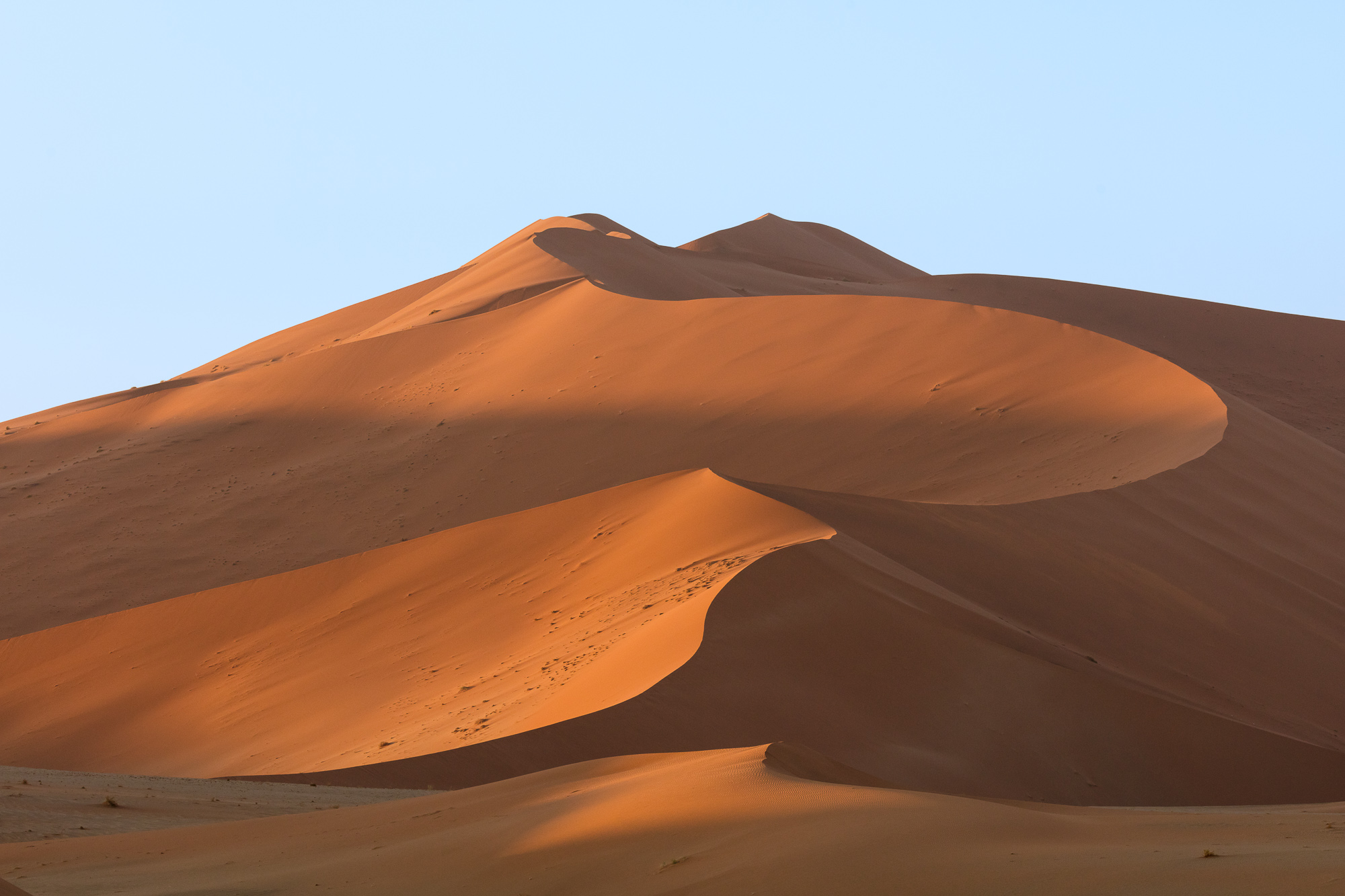
A final story waiting to be told about this area was the play of light across the contours and textures of the dunes. The photo below was shot at sunrise, creating extreme side light and casting a sharp shadow line along the front crest of the dune. This strong shadow added shape and contrast to the dune.
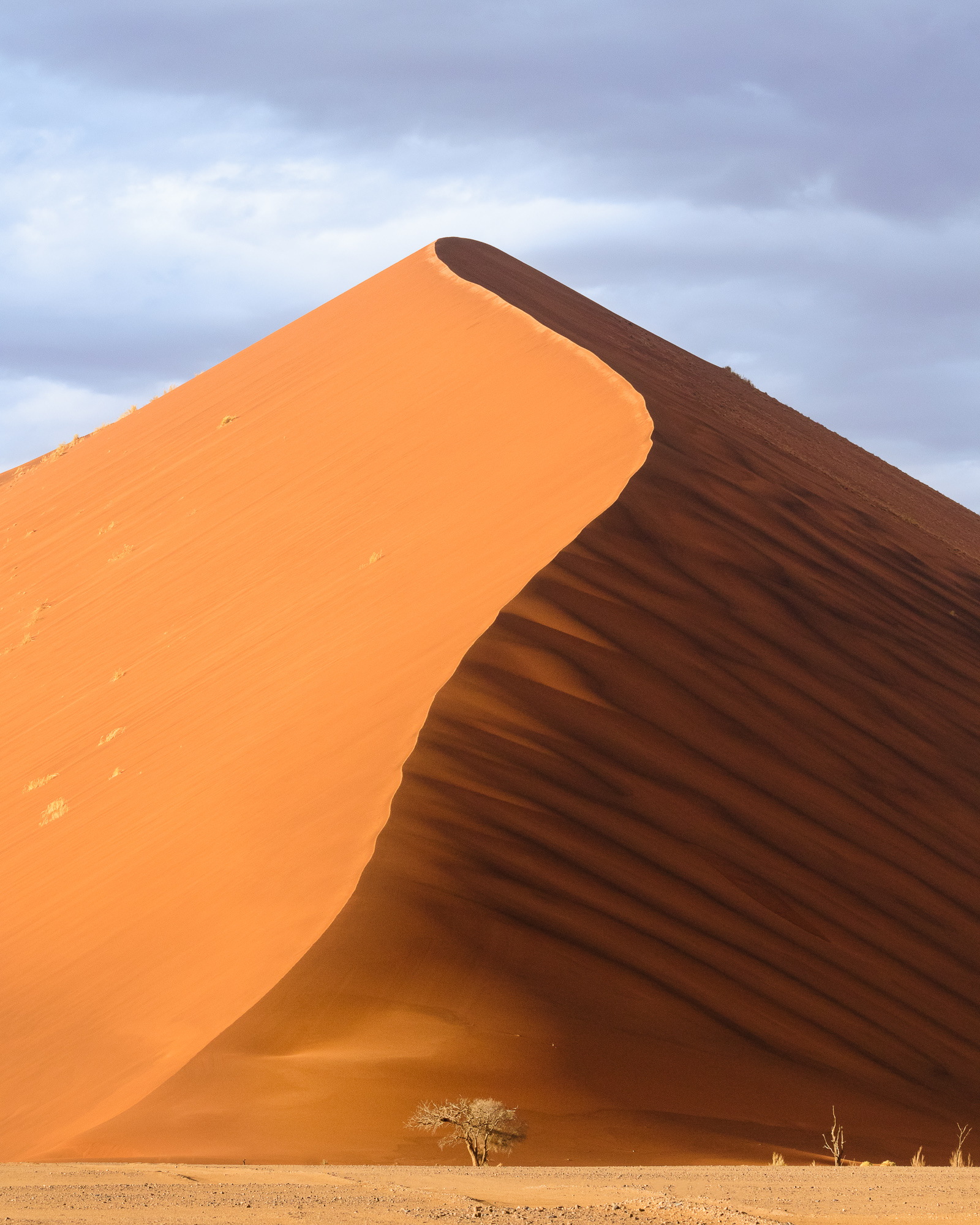
The shadows in the image below manifested very differently in that they are not created by the shape of the dune itself, but rather by clouds moving in front of the sun. Because these dune ridges are actually quite far apart, a large cloud shaded only a single ridge at a time, giving me endless shadow patterns to choose from over the course of about half an hour. This was my favorite image of this type, as the closest and farthest ridges are in shadow, isolating the middle ridge in sunlight.
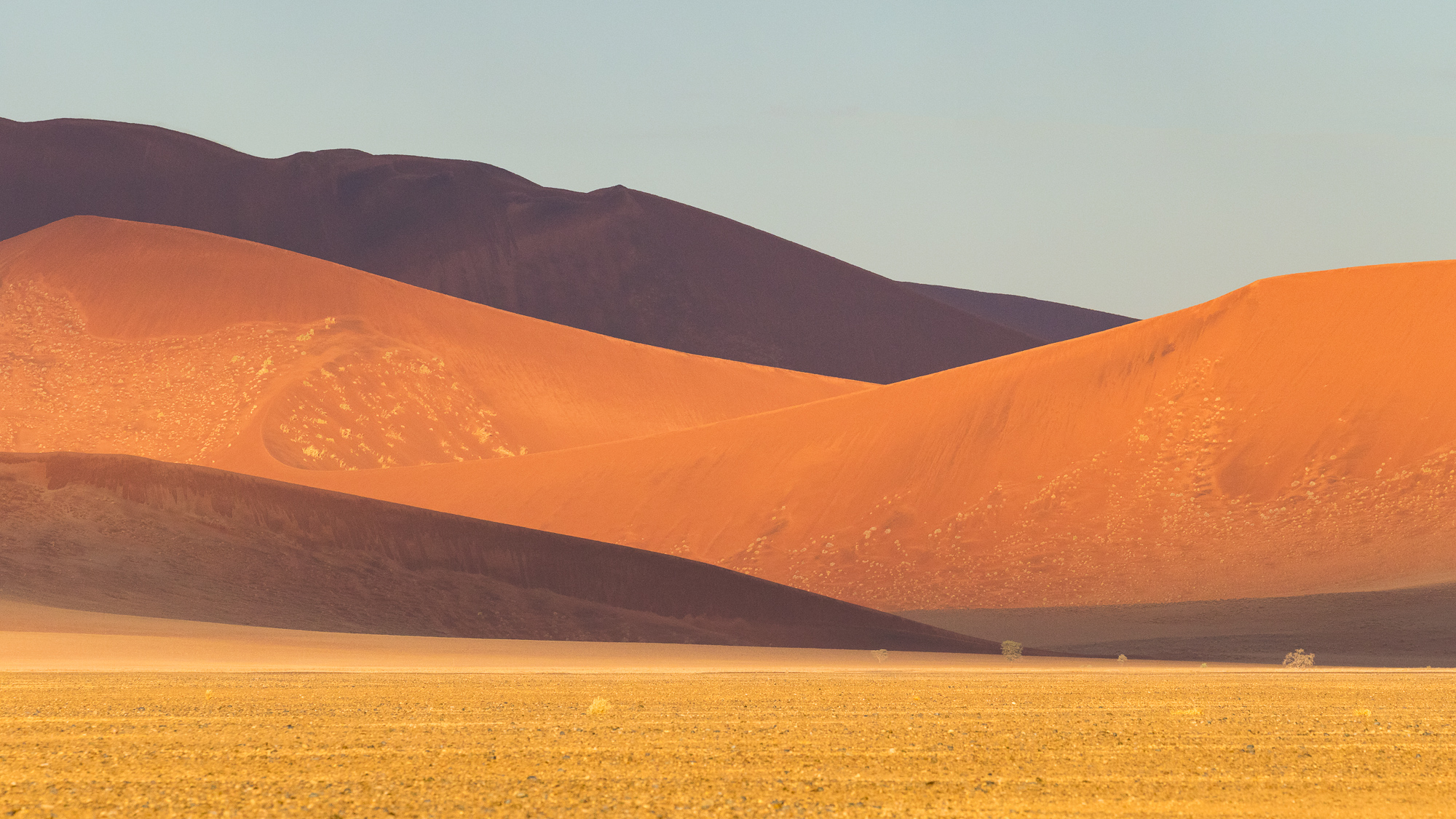
When I first arrived in this vast desert, I was challenged by where to start with my photography. But by focusing on those stories that made this place so special, I could use them to direct my photographic effort. It even helped me develop a shot list to try to fill during my brief stay. Next time you find yourself in a challenging location, stop and listen. Perhaps the area will open up and share its stories with you.

